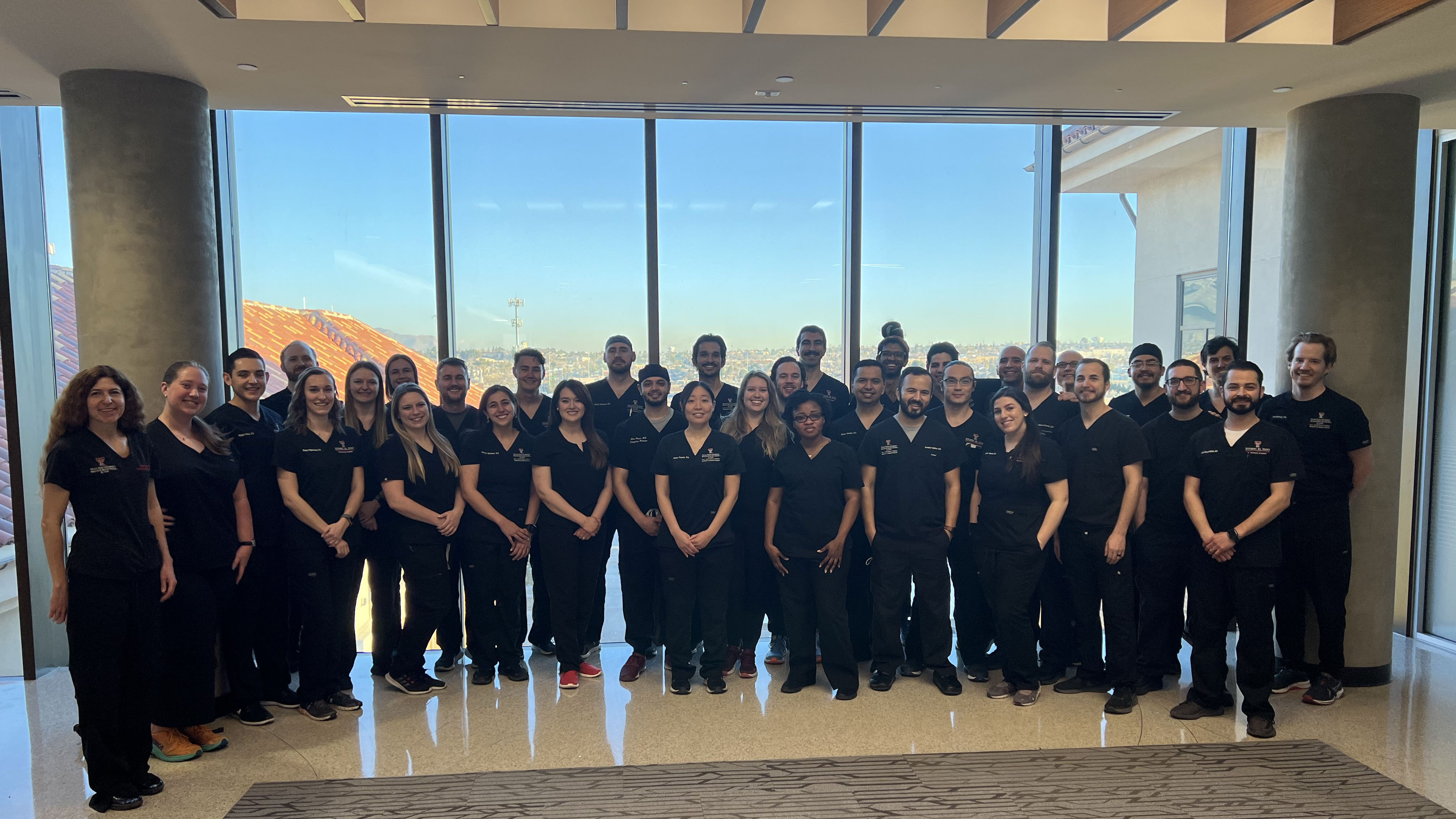Residency Program


Resident Tour |
Resident Recruitment Interview |
Visit us on
The training program consists of didactic instruction, supervised clinical experience, and structured administrative and laboratory experience designed around a core curriculum to prepare the graduate for the examination for certification of the American Board of Emergency Medicine and for independent practice. The resident is evaluated formally by one-on-one observations of patient care, standardized oral exams, patient surveys, Rosh tests, regular in-service examinations, and supervising faculty to ensure the trainee's progress.
The core curriculum is based on the model of the clinical practice of emergency medicine as adopted by ABEM, ACEP, SAEM, CORD, RRC-EM and EMRA. The curriculum covers not only clinical disorders but also administrative entities, research and procedural skills. We have five hours of protected time for didactic conference weekly. In addition, trauma grand rounds, multidisciplinary M&M conference, Journal Club and case conferences are presented. Residents are certified in Advanced Cardiac Life Support (ACLS), Advanced Trauma Life Support (ATLS), Pediatric Advanced Life Support (PALS), Advanced Wilderness Life Support (AWLS), and participate in cadaver and airway procedure lab every July and August. PEER, ROSH, and EM:RAP are provided as resources for our asynchronous didactics.
First-year residents spend 5 months in the emergency department and for 7 months, they experience a variety of off-service rotations (MICU, SICU, Toxicology, OB/GYN, Ophthalmology, Orthopaedics, Anesthesia). They are given the opportunity to make decisions, think through problems, formulate diagnoses and present their cases to supervisors.
Second-year residents spend most of their time in the emergency department, and are given the title of senior resident. They are expected to begin teaching junior residents in addition to seeing patients. The second-year resident will also spend months dedicated to CVICU/Neuro ICU, ultrasound, and an additional trauma/surgical ICU rotation on a night float schedule designed to increase access to procedures and critical care experience.
Third-year residents spend 11 months in the emergency department as a senior resident and in an increasingly supervisory role. They help orient first-year residents and assume more of the organization and decision making responsibilities of the department. During this year, residents perform an administration rotation, and elective month in addition to completing their research and quality improvement projects. Second- and third-year residents also have a two-week rural EM rotation. Each year 3 third-year residents are offered the opportunity to serve as chief residents. These positions offer increased learning opportunities in teaching and administration, and are particularly appropriate for those considering a career in academics.
